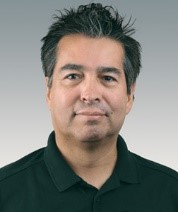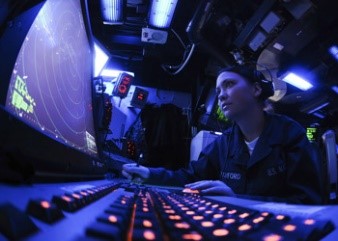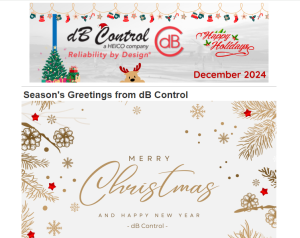Five Tips for Selecting a Test System Provider for EW Equipment Designs
By dB Control VP of Engineering, RF Sources & Receivers, Marcelo Ramos
When designing electronic warfare (EW) equipment such as radar simulation systems where the aim is to preserve lives, system effectiveness is a primary concern. EW system engineers face many challenges testing the effectiveness of their designs, including technical demands, in-house capability, and cost. Consequently, it is essential that test equipment be accurate and reliable, even in adverse conditions.
Any company that sells a radar simulation system can claim their equipment will work as promised. Unfortunately, some test equipment providers may not have the expertise needed to guide you through the early development stages (e.g., helping you set up your specs), or may lack post-sale support (e.g., adjusting your system on the fly, as needed). Considering what’s at stake, and the budgets surrounding EW equipment, you don’t want unforeseen issues to affect the quality, cost, or delivery schedule of your test system.
Common Radar Simulation Challenges
Radar simulation systems comprising RF sources and/or receivers must perform to an exacting minimum standard to be field worthy. Transmitter frequency set-on time must be as fast as possible and frequency needs to be as stable as possible over the entire operational and temperature range, as well as across a wide bandwidth. A common demand is a set-on time of 1 microsecond (μs) and the frequency held within 1 millisecond (ms).
Similarly, receivers must measure frequency accurately as fast as possible while maintaining a stable frequency over the entire operational and temperature range, as well as across a wide bandwidth. At a minimum, receivers should be able to measure within 100 nanoseconds (ns) with an accuracy of one megahertz (MHz).
Of these two test elements, greater challenges are encountered with the transmitter due to the testers’ desire for an ever-faster signaling time (even faster than 1 μs). While these demanding test systems can be built in-house, it takes a consider amount of know-how and resources.
Organizations seeking to achieve these efficiencies in-house often underestimate the budget, timeframe, resources, expertise required. Some companies may overestimate their in-house capabilities, while others don’t understand the complexity of designing and building the product in-house.
Often, the extent of these problems doesn’t become apparent until late in the engineering process. Designers discover that creating a solution with the proper capabilities — meeting specific size, weight, and power (SWaP) requirements, within their budget and timeline — is not possible.
For example, SWaP needs generally are rigid in these equipment specifications. Smaller platforms (e.g., a drone) are likely to have tight size specifications. Prime power, though, often represents the most challenging specification to fulfill. Customers always want a more efficient system, drawing less power. Generally, customers have a baseline number in mind.
Choosing the Optimal Test Equipment
Several options exist for creating and receiving a signal, and testers must determine optimal equipment relevant to their systems. For example, both frequency-locked oscillators (FLOs) and voltage-controlled oscillators (VCOs) can cover a range of frequencies. FLOs can be designed to accommodate various modulations, such as AM, FM, and PM — representing one of their key desirable attributes. Alternatively, synthesizers can achieve significantly faster signaling times than oscillator-based test systems. However, if the synthesizer cannot be easily modulated in FM, bandwidth may suffer.
Developers must also consider system control elements. Antenna control units (ACUs) can play prerecorded antenna patterns and can compensate for platform movements. For example, they can compensate for tilt and roll when mounted on an aircraft. Instantaneous frequency measurement (IFM) units measure frequency and power level, as well as detect pulse on pulse signals.
Digital control units (DCUs), meanwhile, are capable of controlling a single FLO and other RF equipment. Integrated DCUs (IDCUs) combine the control and interface power of a DCU with the RF capabilities of a FLO and the capabilities of an ACU for a complete integrated system controller in a single unit.
5 Tips for Selecting a Test System Provider
While it is possible to create a radar simulation system in-house, it’s also pragmatic to acknowledge that your company may be able to buy a superior system that’s less expensive from a test system provider. Here are five tips that can help you choose your test system development company:
- Many test system providers will want you to provide precise specs and know exactly what you want the test system to do before starting the decision process. Once the details are agreed upon, everything is set in stone. Choose a company that is willing to modify your order even after the design process has begun.
- Ensure that the company has what is needed to meet your specifications, especially if the required equipment is difficult to acquire off the shelf or to design in-house. Look for a vendor with a history of expertise meeting similar requirements for other customers, including price point, size, weight, and prime power
- Ask the company if the accuracy of the test system will be guaranteed over the required temperature range. This can be difficult for inexperienced vendors. For example, some companies require parts that work from -40°C (-40°F) to +71°C (159.8°F). That temperature operating range can be solved through various methods, including design, choice of materials, and heating components inside the unit that maintain a constant internal temperature. Ideally, the company you choose digitally calibrates every system element to compensate for whatever temperature requirement may not have been addressed by physical means.
- Timelines can be affected by the availability of frequency products. Choose a vendor with expertise in a wide range of systems and power products to increase the likelihood that they can find what is needed to get the test system developed on time.
- Many vendors are willing to visit your facility and observe your resources to help you generate appropriate specs for the application. However, once your test system is installed, they aren’t as quick to return to tweak your system for optimal operation. Choose a vendor with the capability to personalize your digital interface needs for your specific needs.
While the base designs of test systems have changed little over time, many EW products, especially radar simulation systems, have become more complex. Fortunately, test system suppliers with decades of experience can show you improvements they’ve made to enable test systems to keep up with EW equipment. These innovative companies have a reputation for the design and manufacture of stable products that continue to perform optimally and reliably for years. That’s one of many reasons to seek out an experienced company that uses a consultative approach to develop your test system, rather than a transactional one.

About The Author
Marcelo Ramos is the Vice President of Engineering, RF Sources & Receivers, at dB Control. Previously, he was Co-Founder and Director of Engineering at TTT-Cubed, Inc., where he developed the company’s electrical systems, software, firmware, and FPGA code. Ramos has also worked at Lucent Technologies, REMEC and Teledyne, where he specialized in military products. When TTT Cubed was acquired by dB Control in 2019, Ramos spearheaded the introduction of dB Control’s custom Instantaneous Frequency Measurement Units (IFMs), Frequency Locked Oscillators (FLOs), Digital Control Units (DCUs), Antenna Control Units (ACUs) and Integrated DCUs.



